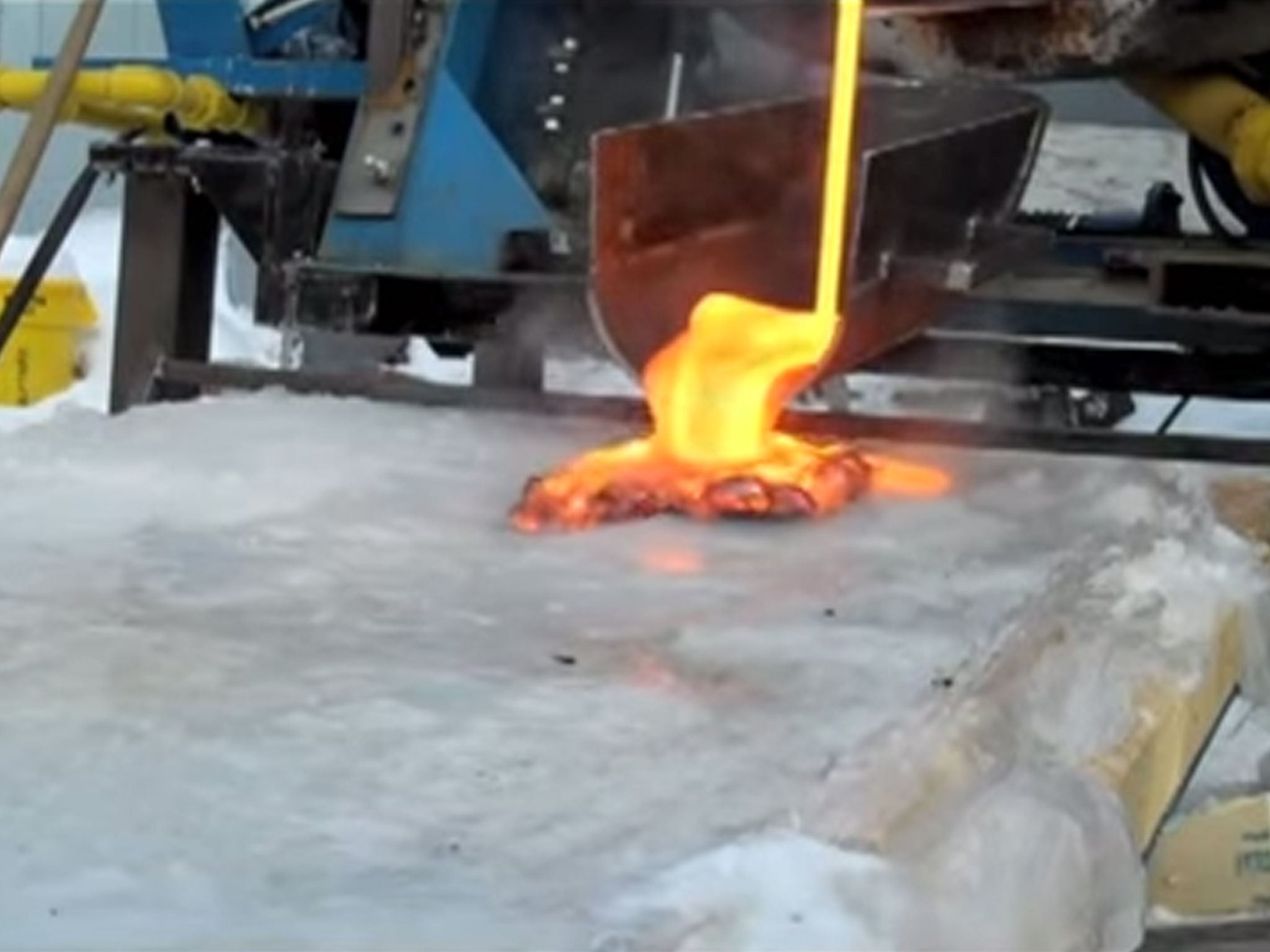Video shows what happens when lava is poured onto ice
It has been described as "scrambled eggs from hell".

Your support helps us to tell the story
From reproductive rights to climate change to Big Tech, The Independent is on the ground when the story is developing. Whether it's investigating the financials of Elon Musk's pro-Trump PAC or producing our latest documentary, 'The A Word', which shines a light on the American women fighting for reproductive rights, we know how important it is to parse out the facts from the messaging.
At such a critical moment in US history, we need reporters on the ground. Your donation allows us to keep sending journalists to speak to both sides of the story.
The Independent is trusted by Americans across the entire political spectrum. And unlike many other quality news outlets, we choose not to lock Americans out of our reporting and analysis with paywalls. We believe quality journalism should be available to everyone, paid for by those who can afford it.
Your support makes all the difference.What do you think would happen if vat of molten lava was poured onto a sheet of ice?
Perhaps the lava melt straight through the ice, or freeze on impact?
The Outrageous Acts of Science channel recently invited sculptor Bob Wysocki and geologist Jeff Karson to explain a video they show which shows how the two substances interact. Almost 7 million curious YouTube users have watched the clip.
“The scrambled eggs from hell is the way it looks in that video. It just did things we didn’t really expect,” said Karson, who is Professor, Department of Earth Sciences at Syracuse University.
"It just did things we didn’t really expect.”
But rather than plummeting through the ice, the 1093C (2000F) lava slowly moves across the ice, and forms into bubbles while making a noise similar to a frying pan filled with boiling oil. Gradually, the bubbles blacken and harden into bauble like shapes.
This happens because the lava is so hot that the ice turns into steam, and bubbles through the lava.
As the lava cools, thick black layer forms which traps the heat, and is similar to glass blowing.
The lava doesn't melt through ice because the steam ice sits on top of a blanket of steam rather than on top of the ice itself. This means the friction between the lava and the ice is very low, experts explain in the video.
Dubbed the Lava Project, the pair have used basaltic lava, similar to that found on the seafloor and that which erupts from volcanoes in Hawaii and Iceland, in scientific and artistic experiments.
Join our commenting forum
Join thought-provoking conversations, follow other Independent readers and see their replies
Comments